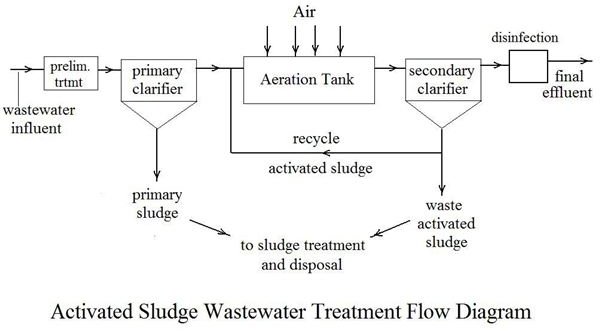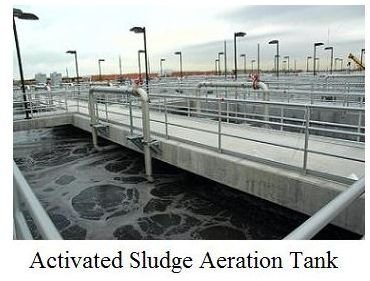Who Invented the Activated Sludge Process? The History of Today's Most Widely Used Biological Wastewater Treatment Process
On April 3, 1914, at a meeting of the Society of Chemical Industry at the Grand Hotel in Manchester, England, Edward Ardern, MSc and William T. Lockett, MSc, presented their classic paper, “Experiments on the Oxidation of Sewage Without the Aid of Filters,” which was later published in the Journal of the Society of Chemical Industry1.
In this paper, Ardern and Lockett described all of the essential components of the activated sludge wastewater treatment process, as it is used today, and as it rapidly became the most widely used biological wastewater treatment process. In this paper, they made the first reported use of the term “activated sludge” to refer to biological solids that they settled out of aerated wastewater and recycled back into the treatment process.
Essentials of the Activated Sludge Process
The essentials of the activated sludge process, which were described in Ardern and Lockett’s paper (and are still in use today), are
- aeration of wastewater in the presence of aerobic microorganisms
- removal of biological solids from the wastewater by sedimentation
- recycling of the settled biological solids back into the aerated wastewater
This set of processes favors aerobic microorganisms that flocculate to form settleable solids that can be removed by sedimentation and sent back into the aeration process, while allowing non-settleable aerobic microorganisms to wash out of the system. Thus a concentrated culture of aerobic microorganisms can be maintained in the aeration tank, so that the organic matter in the incoming wastewater will be oxidized to carbon dioxide and water with a manageable hydraulic residence time (and thus a reasonable tank volume).
Activated sludge is one type of biological wastewater treatment, a type of treatment that functions by bringing wastewater containing waste organic matter in contact with aerobic microorganisms and oxygen, thus causing biological oxidation of the waste organic matter and removal of biochemical oxygen demand from the wastewater.
Wastewater Treatment Prior to 1914
In the first half of the nineteenth century, the use of sanitary sewer systems in cities was just emerging in Europe and the U.S. as an alternative to pit privies, ditches, dumping chamber pots into the street, or cesspits. The sewer systems typically simply conveyed the wastewater for discharge into a body of water. By the mid-1800s, the relationship between wastewater and water supply in the spread of waterborne diseases became clear, drinking water chlorination began, and pressure for treatment of wastewater increased. Here are some of the developments in wastewater treatment from the mid-1800s to 1914:
- In the mid-1800s, with the advent of sanitary sewer systems but almost no treatment processes, efforts were made to make beneficial use of the wastewater that was being collected, with emphasis on using the nitrogen and phosphorus plant nutrients in the wastewater. For example, the ABC process2 used alum, blood, and clay (ABC) in one of the earliest attempts at physical-chemical wastewater treatment.
- Starting in about the 1870s, septic tanks came into use for anaerobic treatment of wastewater.
- Starting in the 1880s, experiments with aeration of wastewater were begun with little success, because without recycling of the aerobic microorganisms to bring up their concentration, the biological oxidation was a very slow process.
- In the late 1800s and early 1900s, fixed film biological treatment came into use with biological filters that evolved into trickling filters, still in use today.
- 1913 - 1914 - Ardern and Lockett, who invented the activated sludge process, conducted experiments and reported on the benefits of recycling “activated sludge” for aerobic treatment of wastewater.
Development of the Activated Sludge Process after 1914

Following the presentation by Ardern and Lockett on their activated sludge experiments in 1914, interest in the process was widespread and development and use of the activated sludge process spread very rapidly. The second edition of “The Activated Sludge Process of Sewage Treatment - A Bibliography of the Subject,” by J. Edward Porter3, published in 1921, just seven years after the initial paper presentation by Ardern and Lockett, contains a listing of 606 (yes, six hundred six!) journal articles, conference presentations, patents and news articles on the subject of “activated sludge,” covering the period from 1912 through 1920. The list includes 8 items from 1912, 1913, and 1914 before Ardern and Lockett’s paper presentation. The other 598 entries are about activated sludge.
Subsequently the activated sludge process has become the most flexible and most widely used biological wastewater treatment process, with applications ranging from small package plants treating as little as 0.01 MGD to large custom designed activated sludge plants treating flows up to hundreds of MGD.
References and Image Credits
1. Ardern, E. and Lockett, W.T., “Experiments on the Oxidation of Sewage Without the Aid of Filters,” Journal of the Society of Chemical Industry, Vol 33, No 10, pp 523 - 539, 1914 (presented at Manchester Section meeting on April 3, 1914).
2. Alleman, J.E., “The Genesis and Evolution of Activated Sludge Technology,” https://www.eedc.org/DocumentView.aspx?DID=301
3. Porter, J.E., “The Activated Sludge Process of Sewage Treatment - A Bibliography of the Subject,” 2nd Ed, General Filtration Co., Inc, Rochester, NY, 1921.
4. Image of Activated Sludge Aeration Tank - https://www.slcgov.com/utilities/NewsEvents/news2007/news3262007.htm
